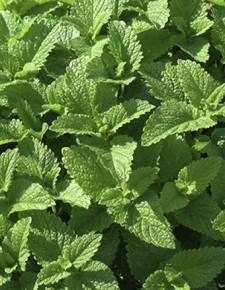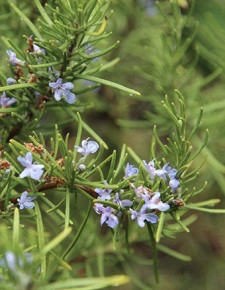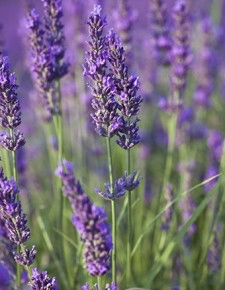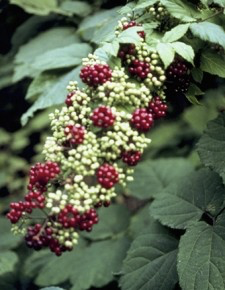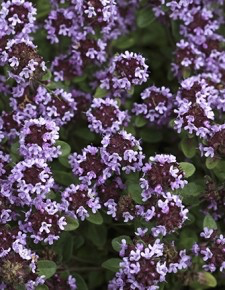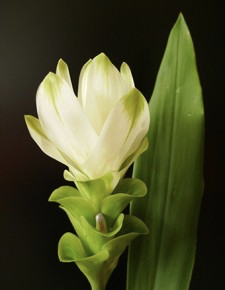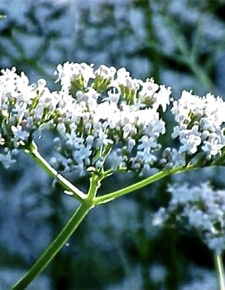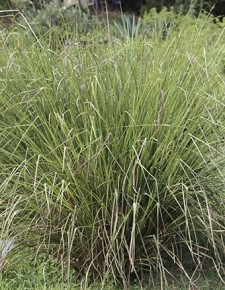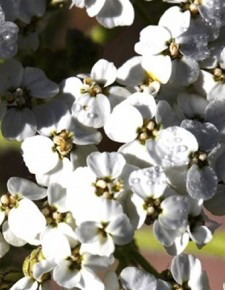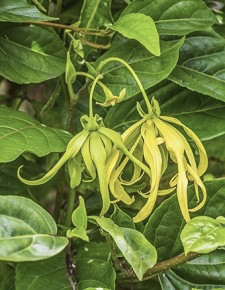Balancing Hormones
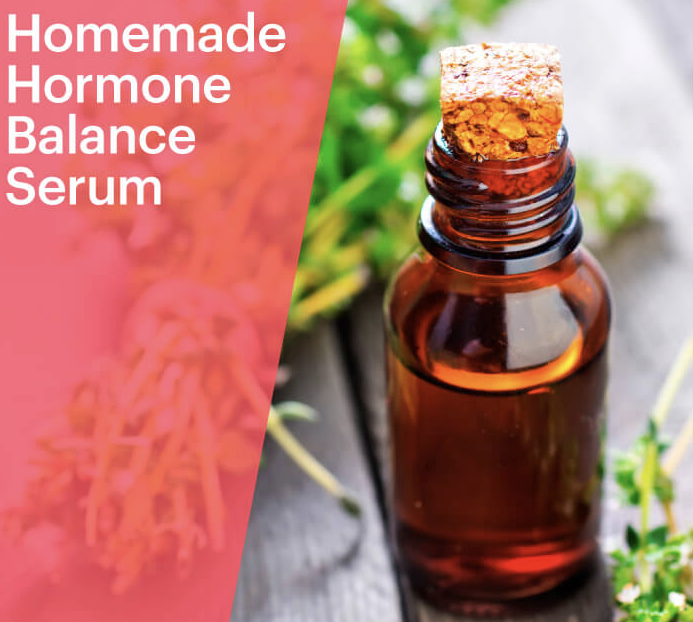
Hormonal balance is one of the most important aspects of a properly functioning body. Hormones, such as estrogen and insulin, are chemical messengers that affect many aspects of your health as they travel in your bloodstream throughout your entire body. Some of the most common side effects of hormone imbalance include:
- Infertility
- Weight gain
- Depression
- Fatigue
- Insomnia
- Low libido
- Hair loss and hair thinning
The best way to balance hormones naturally is through diet. That includes food sources; for instance, avocados benefit hormonal balance greatly. In addition, using essential oils to supplement your diet can help balance hormones and ward off health problems associated with hormonal imbalance. Clary Sage and Thyme are among the top hormone balancing essential oils.
The biggest benefit of clary sage is that it helps balance out estrogen production in the body. A lot of health issues today, even things like infertility, PCOS and estrogen-based cancers, are caused from excess estrogen in the body — in part, because of our consumption of high-estrogen foods.
Because clary sage helps balance out those estrogen levels, it’s an incredibly effective essential oil in the a wide array of hormone imbalances. So, whether you’re looking for natural remedies for PMS cramps during the month or possibly already know you have excess estrogen in your body, clary sage is a great essential oil to consider adding to your essential oil regime.
Thyme oil benefits the body by improving progesterone production. Both men and a lot of women are low in progesterone, and low progesterone levels have been linked with infertility, PCOS and depression, as well as other imbalanced hormones within the body.
Improved progesterone makes thyme a great essential oil you can use to naturally balance out hormones in your body. Plus, it’s far better than turning to synthetic treatments, such as hormone replacement therapy, which can make you dependent on prescription drugs, mask symptoms while developing diseases in other parts of the body and often causing serious side effects.
In addition to thyme and clary sage oil, add ylang ylang oil and evening primrose oil to the mix. Once combined, rub five drops on your neck twice daily to help keep your hormones in check.
And there is menopause…
For a vast majority of women, menopause symptoms are mild and do little to disrupt daily life. However, the discomfort of hot flashes, irritability and fatigue can make life exceptionally difficult. (1) Thankfully, for the growing number of women who wish to avoid prescription hormone medications to manage their symptoms, remedies like essential oils for menopause can provide natural and effective relief!
Menopause Risks
Every middle aged woman will go through a major life change where her body transforms from being fertile to infertile by stopping the menstruation process. This is a major life change that can take several months or years, and the completion of the process is known, clinically, as menopause. However, menopause has been the name most people give to the process of this change, and the symptoms it produces.
<>When a woman’s body starts the process of menopause, estrogen levels begin to drop. This change in hormone levels causes a number of symptoms, including hot flashes, irritability, insomnia and fatigue. For many women, these symptoms make enjoying normal daily activities difficult. In addition, the changing hormone levels can increase a woman’s risk of osteoporosis, which can increase the risk for fractures. This is why it’s more common for elderly women to fracture a hip than other populations. (2)
On that note, it should be of interest that essential oils of juniper, sage, rosemary, pine, dwarf pine, turpentine, and eucalyptus have been found to inhibit bone resorption when added to the food in animal studies. Pine oil, specifically, can protect from bone loss. (5)
Embracing Menopause
If you asked the average woman what she knows about menopause, she would likely give you an answer relating to hot flashes and mood swings. It’s no wonder, as our society and media have made this to be one of the most prominent parts of this life change. These are some of the symptoms of menopause, but they are not the actual change itself.
Interestingly, menopause is a major life change that can bring uncomfortable symptoms, but for many women, it’s also a freeing time. Once a woman has been without menstruation for 12 consecutive months, she is considered no longer fertile and the all-too-familiar hassle of her monthly “blessing” becomes a distant memory. For those who no longer want to take birth control or manage natural family planning any longer, menopause is also a welcomed event.
It is no wonder that many women find themselves celebrating the end of a very long chapter of their lives where they are forced to use pads, tampons and the inconvenience of unsightly stains from menses every month!
Essential Oils that help provide Menopause Relief
Research is clear on one thing: essential oils work for menopausal women. A 2008 article published in the Evidence-Based Complementary and Alternative Medicine journal summarizes what we do know (3). That article goes on to report how 60 menopausal women aged 45 and 54 years old responded to a series of essential oil massage treatments in light of these 11 menopausal symptoms: hot flushes (vasomotor), paresthesia, insomnia, nervousness, melancholia, vertigo, weakness, arthralgia or myalgia, headache, palpitations, and formication. Each woman received one 30-min aromatherapy treatment session each week for 8 weeks with essential oils of lavender, rose geranium, rose and jasmine diluted in almond and evening primrose oil. Compared to controls, the measured menopausal symptoms were greatly reduced in the women who enjoyed regular aromatherapy massage.
Whether one essential oil has more benefit over another still remains to be seen. However, these oils are usually some of the most popular…
Lavender Oil
The changing and shifting hormones of menopause can cause feelings of anxiety and problems with sleep. Lavender has long been known to promote feelings of relaxation while lifting the mood, also promoting better sleep in people dealing with insomnia. (4) Adding lavender aromatherapy to the nighttime routine can help improve sleep and relaxation.
It is also suspected that lavender can help calm the body so that hormone levels naturally balance, and a cold compress with one drop of diluted lavender oil can help reduce discomfort in the perineum during menopause.
Clary Sage Oil
Clary sage oil has been known to effectively help with hot flashes. Those who are feeling a hot flash coming on can get fast relief by rubbing 1-2 drops of diluted clary sage oil on the back of the neck or on the feet. It also is effective when inhaled during episodes. Additionally, clary sage has been shown clinically to be more effective than the monoamine neurotransmitter serotonin or 5-hydroxytryptamine (5-HT) and can specifically menopausal women by: (5)
- Reducing thyroid stimulating hormone
- Decreasing depression
- Significantly decreasing cortisol (i.e. stress levels)
Peppermint Essential Oil
Peppermint is another essential oil that can lessen discomfort during a hot flash. Misting one’s face with a water spritzer or using a portable inhaler during an episode can mitigate the symptoms instantly. Since hot flashes are one of the most noticeable symptoms of menopause, having some peppermint oil on hand is a good idea.
Menopause signals the end of menstruation. However, menstruation and menstrual cramping can still occur. In addition, even after menstruation, as many as 50 percent of women experience menstruation-related cramping, a condition known as dysmenorrhea, during the beginning stages of menopause. (6) Peppermint oil may help reduce some of the pain and discomfort of this type of cramping.
Basil Essential Oil
It has been suggested that basil contains an estrogen hormone-like component. (7)This means that it can potentially help the body adjust to changing estrogen levels, reducing some of the discomfort of menopause. Traditionally, basil oil has been used to help fight hot flashes when diluted oil is applied to the feet or back of the next, and aromatic use can help boost the mood during menopause.
However, before you jump on the essential-oils-can-balance-my-estrogen-levels bandwagon, please keep in mind that essential oils chemist Robert Pappas, PhD says that this is not likely. In the context of a discussion over clary sage and the chemical sclareol: (8)
“Hopefully, even without a chemistry degree, anyone can see that, based on the structural parameters of both systems, there is no way that sclareol could ever perform the function of estrogen in the human body….I think the chemical evidence is pretty clear that sclareol is not a steroidal estrogen, does not mimic the function of any estrogen molecules, does not stimulate estrogen production (why would it?), and would not appear to have any mechanism by which it can “balance hormones” at least not by a pathway that has anything to do with estrogens.
If you see anyone making these types of claims, simply ask them to site the research that can propose a chemical mechanism that is remotely plausible to accomplish any of these tasks. I don’t think they will be able to produce anything credible to support the claims. If clary sage oil does actually work in any of the above capacities then it has to do it by some other mechanism, unrelated to how estrogens perform in the body. I am not saying that it’s impossible that clary sage can have some of the effects that have been claimed, but just be aware that its not really possible that the oil can mimic estrogens or that the oil contains estrogen like molecules.”
Pappas’ statement seems well-supported by research as King’s College London researchers confirmed that, “None of these compounds showed estrogenic or anti-estrogenic activity in the estrogen-responsive human cell line.” (9) However, this is not to say that essential oils cannot trigger the pituitary gland to produce follicle-stimulating hormone (FSH), which causes the release of estrogen.
Neroli Oil
In one 2014 study, 63 healthy postmenopausal women inhaled neroli oil for five minutes twice a day. During this time, they answered a questionnaire specific to quality of life during menopause. The women who were given the neroli oil instead of a control an increased desire for sexual intimacy, improved estrogen concentrations and improved blood pressure. They also reported less stress after inhaling the neroli oil. Women who are frustrated with a lack of libido, high stress levels and increased blood pressure can get relief from this oil. (10)
In addition, neroli has anti-inflammatory properties. This can help with many of the aches and pains that come from getting older and the menopause process.
Geranium Oil
Geranium oil can help with many of the symptoms of menopause. It helps improve dry skin, which can be a common problem during menopause. It also may help balance hormone levels. Research has also fund that the antidepressant properties of geranium oil can benefit women who are struggling with depression and mood swings. In a clinical trial of 120 menopausal women, those who received aromatherapy massage using geranium essential oil and almond oil indicated and improvement in depression and mood after an 8-week period. (11)
Vitex Agnus-Castus Oil
An oil you’re probably not too familiar with, Vitex agnus-castus is a shrub that is native to Central Asia and Vitex agnus-castus. Having blue-violet flowers, long, finger-shaped leaves, and dark purple berries the fruit and seed are used to make medicine; where the leaves and berries are distilled to make essential oils.
Vitex has been traditionally consumed for a variety of female health concerns such as:
- Controlling bleeding
- Female infertility
- Helping the body force out the placenta after childbirth
- Increasing breast milk production
- “Lumpy” (fibrocystic) breasts
- Menopause
- Menstrual cycle irregularities
- Premenstrual dysphoric disorder (a more severe form of PMS)
- Premenstrual syndrome (PMS)
- Preventing miscarriage in women with low levels progesterone
Of the studies that have evaluated the essential oil, one discovered that, compared to the oil extracted from the berry, the leaf oil appears to have a broader range of actions. (12)
How to Use Essential Oils for Menopause Symptoms
If you are looking to use a mixture of these oils for your menopause symptoms, there are a number of ways to benefit. Consider:
- Create a body moisturizer by mixing five to eight drops of your essential oil of choice to an unscented carrier oil, like sweet almond oil. Apply to the skin two to three times per day. A liquid carrier oil can be used to create a massage or bath oil.
- Place a couple of drops of your chosen oil on a tissue, and hold it under your nose to inhale when you start experiencing symptoms.
- Mix two to 10 drops of essential oil in a spray bottle with two ounces of purified water, then spray in the air in your home.
- Mix eight drops of oil into 1/2 cup of coconut milk and pour into a hot bath.
For a go-to body oil for menopause symptoms, consider this recipe:
- 2 oz carrier oil or natural body lotion
- 1 drop jasmine oil
- 2 drops clary sage oil
- 6 drops lemon oil
- 5 drops geranium oil
Mix these to use as a massage oil or body lotion to use daily or when symptoms are present.
